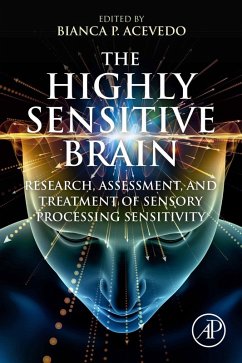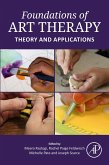The Highly Sensitive Brain is the first handbook to cover the science, measurement, and clinical discussion of sensory processing sensitivity (SPS), a trait associated with enhanced responsivity, awareness, depth-of-processing and attunement to the environment and other individuals. Grounded in theoretical models of high sensitivity, this volume discusses the assessment of SPS in children and adults, as well as its health and social outcomes. This edition also synthesizes up-to-date research on the biological mechanisms associated with high sensitivity, such as its neural and genetic basis. It also discusses clinical issues related to SPS and seemingly-related disorders such as misophonia, a hyper-sensitivity to specific sounds. In addition, to practical assessment of SPS embedded throughout this volume is discussion of the biological basis of SPS, exploring why this trait exists and persists in humans and other species.
The Highly Sensitive Brain is a useful handbook and may be of special interest to clinicians, physicians, health-care workers, educators, and researchers.
The Highly Sensitive Brain is a useful handbook and may be of special interest to clinicians, physicians, health-care workers, educators, and researchers.
- Presents a neurobiological perspective of sensory processing sensitivity (SPS)
- Provides assessment criteria and measurement tools for highly sensitive children and adults
- Discusses the health and social outcomes of being highly sensitive in children and adults
- Examines clinical issues related to high sensitivity
- Offers practical applications and a future vision for integrating high sensitivity in our society
Dieser Download kann aus rechtlichen Gründen nur mit Rechnungsadresse in A, B, BG, CY, CZ, D, DK, EW, E, FIN, F, GR, HR, H, IRL, I, LT, L, LR, M, NL, PL, P, R, S, SLO, SK ausgeliefert werden.
"This is a high-quality text regarding its description and summation of existing knowledge of SPS. The book does a thorough job of describing the biological basis of SPS, including genetic and epigenetic components. These objective measurements will likely help legitimize SPS as a normal variant of sensory processing. The addition of several scales for the assessment of SPS as well as the descriptions of clinical strengths and weaknesses of individuals are highly
useful. The book could benefit from more visuals, perhaps to aid in the understanding of the complex science that it discusses in some chapters. The book also does not have any color and can feel pedantic at times. Lastly, the book's final chapter, which discusses how SPS individuals may be helpful with off-world space missions - while interesting - seems out of place with the content of the rest of the book. Ultimately, the strengths of the book outweigh
its deficiencies. " --Doody
useful. The book could benefit from more visuals, perhaps to aid in the understanding of the complex science that it discusses in some chapters. The book also does not have any color and can feel pedantic at times. Lastly, the book's final chapter, which discusses how SPS individuals may be helpful with off-world space missions - while interesting - seems out of place with the content of the rest of the book. Ultimately, the strengths of the book outweigh
its deficiencies. " --Doody









